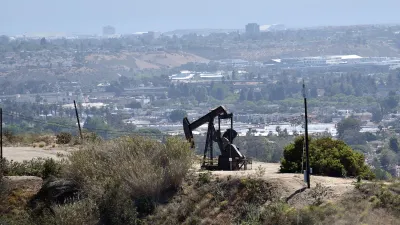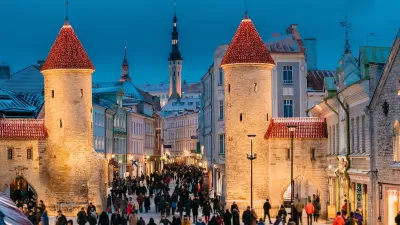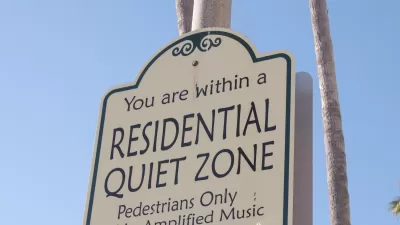Noise pollution tends to impact low-income communities more than others. For those who can afford the luxury, there are ways to shut out the noise.

Thomas McMullan reports on the question of to deal with the increasing noise that comes with urban densification.
As cities swell, writes McMullan, "there are signs we are finding it harder to cope with the noise." Not only are more people dealing with noise pollution in the city, noise pollution tends to affect low-income communities the most.
In the US, research from 2017 suggests poorer urban neighbourhoods are nearly two decibels louder than affluent areas. Noise pollution tracks social segregation. The same study also found that, across US cities such as Detroit and Chicago, communities with larger proportions of black, Hispanic and Asian residents face higher noise levels than other neighbourhoods.
As McMullan documents, recent research show noise pollution to have negative public health effects,l ike high blood pressure, heart attacks, and type 2 diabetes.
So what come be done about all that noise? McMullan provides examples of development projects that have deployed technology and building techniques to combat noise pollution, but usually at a cost premium. McMullan also describes innovative concepts, technologies, and practices of sound design, used to mask noise or add sounds to cover noise in the built environment—it's called pink noise rather than white noise.
FULL STORY: Cities are louder than ever – and it's the poor who suffer most

Study: Maui’s Plan to Convert Vacation Rentals to Long-Term Housing Could Cause Nearly $1 Billion Economic Loss
The plan would reduce visitor accommodation by 25,% resulting in 1,900 jobs lost.

Placekeeping: Setting a New Precedent for City Planners
How a preservation-based approach to redevelopment and urban design can prevent displacement and honor legacy communities.

Using Old Oil and Gas Wells for Green Energy Storage
Penn State researchers have found that repurposing abandoned oil and gas wells for geothermal-assisted compressed-air energy storage can boost efficiency, reduce environmental risks, and support clean energy and job transitions.

Washington State Plans Ambitious ‘Cycle Highway’ Network
The state is directing funding to close gaps in its existing bike network and make long-distance trips more accessible.

Homeowners Blame PG&E for Delays in ADU Permits
The utility says it has dramatically reduced its backlog, but applicants say they still face months-long delays for approvals for new electrical work.

Rethinking Wildfire Defense: How a Landscape Approach Can Protect Neighborhoods
Post-fire analysis of the Eaton Fire reveals that a landscape approach — including fire-resistant vegetation, home hardening, and strategic planning — can help reduce wildfire risk, challenging assumptions that trees and plants are primary fire hazards.
Urban Design for Planners 1: Software Tools
This six-course series explores essential urban design concepts using open source software and equips planners with the tools they need to participate fully in the urban design process.
Planning for Universal Design
Learn the tools for implementing Universal Design in planning regulations.
Borough of Carlisle
Caltrans
Heyer Gruel & Associates PA
Institute for Housing and Urban Development Studies (IHS)
City of Grandview
Harvard GSD Executive Education
Salt Lake City
NYU Wagner Graduate School of Public Service
City of Cambridge, Maryland





























